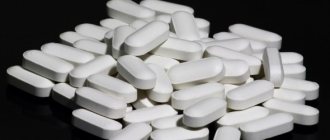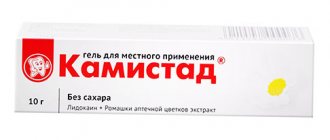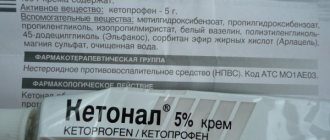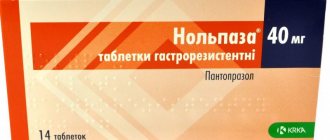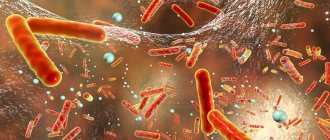Forms of release and composition of the drug Cerebrolysin
The drug is obtained as a result of solvolysis of brain tissue substances with water.
The list of drug components includes:
- a complex of peptides obtained from pig brain (15%);
- NaOH (sodium hydroxide);
- special water for injections.
Cerebrolysin can be purchased only in the form of an injection solution in a brown bottle or ampoule.
Depending on the volume, the drug packaging can be purchased in the following variations:
- 10 ampoules, each with a volume of 1 or 2 ml;
- 5 ampoules, each with a volume of 5, 10 or 20 ml;
- 1 bottle of 30 ml.
Pharmacological properties
Peptides and active amino acids entering the brain neurons through the bloodstream catalyze metabolic pathways inherent in a particular organ. The drug prevents damage to neurons when exposed to harmful factors and normalizes metabolism.
Cerebrolysin, as well as its analogues, as indicated in the instructions, promote the breakdown of complex compounds in brain tissue, which results in the production of large amounts of energy. In addition, the pharmacological properties of this medicine include improving the synthesis of proteins inside the cells of the aging brain.
Cerebrolysin reduces the harmful effects of lactation coma in children. The mechanism of action of the drug, according to researchers, is to increase the resistance of brain cells to such damaging factors as:
- reduced oxygen content;
- decreased glucose concentration;
- poisoning by toxins.
Cerebrolysin inhibits oxidative processes in the body, thereby reducing the harmful effects of free radicals on brain cells.
If you take the drug regularly, your mental activity will improve, it will become easier to remember and reproduce information, your concentration will improve and your mood will normalize. Changes in electroencephalography characteristics are also regressed.
Composition and effect of the medicine
The drug is produced in ampoules of 1, 2, 5, 10 ml of a 5% solution of the active substance. Tablets are not used for the treatment of neurological diseases. The release form of the drug allows it to be used for intramuscular and intravenous administration.
The active substance of Cerebrolysin is peptides that have great activity. Due to its effectiveness, the medication regulates many processes in brain tissue.
Research has established the following properties of the drug:
- participation in the formation of protein structures;
- activation of amino acids in the area of neurons.
After using the medication, pathological motor reactions decrease, memory and thinking stabilize. The properties of the drug have an effect on the aging or developing nervous system. The use of Cerebrolysin increases tissue resistance to hypoxia and the effects of toxic substances. The composition of the drug prevents the development of a pathological process in the central nervous system and eliminates swelling in ischemic stroke.
Pharmacodynamics and pharmacokinetics
Cerebrolysin for children, scientific reviews of which are mostly positive, has been the subject of repeated studies.
As a result, it turned out that the use of this drug allows:
- prevent myocardial infarction;
- remove swelling;
- bring microcirculation back to normal;
- reduce the mortality rate.
Cerebrolysin for children, reviews of studies of which also indicate that the drug has an effect on brain cells, compensates for the critical lack of energy in the human body. In addition, it stimulates an increase in the number of molecules that transport glucose through a mechanism that prevents harmful substances from entering the brain.
The drug ensures that the synthesis and degradation of metabolites corresponds to the physiological needs of the body, and also relieves chronic pain by acting on the neurons of the brain.
When analyzing the well-being of healthy people and patients with a pathophysiological relationship between vascular diseases of the brain and mental impairment, it turned out that the following parameters change when taking the medicine:
- neuron activity increases;
- brain functions improve;
- patients begin to perform daily tasks without assistance.
As a result of numerous experiments, it was also revealed that Cerebrolysin does not have a negative effect on the human immune system, does not stimulate the formation of antibodies and does not affect the regulation of physiological processes.
Obtained from porcine brain cells, the peptide fraction includes biologically active peptides identical to the human body, so it is impossible to conduct pharmacokinetic studies.
Data obtained from pharmacodynamic analysis show that after an injection of the drug has been performed, stimulation and maintenance of neuronal development is determined throughout the day in the blood plasma.
Indications for use
Cerebrolysin is prescribed if the patient has degenerative-dystrophic disorders in the brain due to various pathologies of a psychiatric and neurological nature.
The main indications for its use are:
- Alzheimer's disease;
- concussion;
- ischemic stroke;
- impairment of children's mental development;
- brain or spinal cord injury;
- complications that appeared after a stroke;
- unbalanced nervous system;
- childhood hyperactivity;
- senile dementia;
- poor blood circulation in the brain tissue.
What does Cerebrolysin help with?
The drug is effective in diseases such as:
- endogenous depression;
- Alzheimer's disease;
- ischemic stroke;
- cognitive personality disorders.
Indications for the use of a nootropic drug include its use during the period of restoration of motor activity of the upper extremities for 3 weeks. The drug affects the overall outcome of ischemic stroke and is recommended for use. Cerebrolysin includes mechanisms of neuroprotection; it is used to improve arm movement in a patient who has suffered a stroke.
The medication is prescribed for cognitive impairment in hypertension:
- asthenic syndrome;
- headaches.
The drug is needed to reduce dizziness and fatigue.
The benefit of a nootropic drug for hypertension is associated with metabolic disorders.
Intramuscular injections for children improve nutrition of nervous system cells, affect neurons, and protect them from damage. The benefit of Cerebrolysin lies in its composition, which includes vitamins B₁, B₉, B₁₂, E, and microelements.
At what age can the drug be used?
Cerebrolysin for children, reviews of which from pediatricians and neurosurgeons indicate that the drug is approved for use in childhood, unlike other neuroprotective agents, has been tested through clinical trials even in newborns.
They confirmed that the drug is completely safe, so it is prescribed to both infants and preschool and school-age children. When using Cerebrolysin, you must follow all recommendations of a pediatric neurologist.
The number of injections that will need to be given and their dosage is determined by the attending physician, based on his diagnosis and the individual characteristics of the child.
Which manufacturer is better
The nootropic drug is produced by different companies, but the best manufacturer is Dr. Pfleger Arzneimittel GmbH. However, some experts classify the medication as a drug of unknown effectiveness.
The Cochrane Collaboration provided evidence that the drug has no therapeutic effect in the treatment of ischemic stroke. Placebo treatment will not help the patient, but it was later proven that the medication has a clinical effect on a patient suffering from Alzheimer's disease and remains in the body for 6 months after the end of therapy.
Instructions for use, dosage of the drug
Cerebrolysin should be administered intramuscularly or directly into the bloodstream (vein). If a dose of 5 to 10 ml is prescribed, the drug is administered intramuscularly without prior dilution with a solution. If the attending physician prescribes a dosage of 10 to 30 ml, then Cerebrolysin is first diluted with a solution of 5% D-glucose or sodium chloride, and then injected slowly into a vein using a dropper.
The diluted solution can be stored for 24 hours at a temperature not exceeding +25°C. Often the entire treatment period takes from 10 to 20 days. In separately prescribed cases, Cerebrolysin is administered once at the maximum permissible dose - 50 ml of solution.
Cerebrolysin can be injected into children
| Recommended daily dose of the drug | Indications |
| from 10 to 50 ml | pathologies that have arisen after brain surgery, hemorrhagic and ischemic stroke, severe forms of meningitis, brain and spinal cord injuries, as well as their consequences |
| from 5 to 50 ml | traumatic brain injury, late and residual period of stroke |
| from 5 to 30 ml | depression, metabolic disorders, Alzheimer's disease |
| from 1 to 2 ml | neurological diseases |
For children under six months old, the recommended dosage is 0.1 ml per kilogram of weight, but the maximum allowable dose for this age is 2 ml per day.
Treatment, as a rule, lasts until recovery or significant improvement in the child’s condition. The drug should be administered 1 to 3 times a week. A second course of therapy can be carried out 3-4 months after the end of the first.
Indications and contraindications for Cerebrolysin injections
When using Cerebrolysin for children under one year of age, you need to carefully weigh the pros and cons. If there are no direct indications for its use (there is no specific diagnosis), then the use of painful injections is best avoided.
Indications for the use of Cerebrolysin in childhood:
- Cerebrovascular insufficiency in children;
- Consequences of perinatal damage to the nervous system;
- Consequences of traumatic brain injuries (including during childbirth);
- Cervical spine injury;
- Mental retardation;
- Attention deficit and hyperreactivity.
Contraindications to the use of the drug are:
- Intolerance to the components of the drug;
- Epilepsy;
- Renal failure in the acute period.
Although the drug is well tolerated by children, it is still unacceptable to prescribe it independently.
Side effects of Cerebrolysin injections
Even the safest medication can have unwanted side effects. This is due to the individual characteristics of a particular child. When prescribing Cerebrolysin to a child of 3, 4, 6 years of age or an infant, it is worth considering these features and possible adverse effects.
Rarely occurring side effects include:
- Sweating, dizziness, feeling hot;
- Tachycardia (increased heart rate);
- Nausea and vomiting, bloating, decreased appetite;
- Diarrhea or stool retention;
- Difficulty falling asleep;
- Convulsive seizures (extremely rare);
- Headache;
- Shortness of breath, chills;
- Allergic reactions.
Some mothers note that after Cerebrolysin injections, the child became disobedient. This may be due to both the child’s behavioral characteristics at certain age periods and the use of the drug. The activation effect of Cerebrolysin can cause agitation syndrome with the appearance of aggressive behavior.
If any changes occur in the child’s behavior or condition that can be associated with the use of the medicine, you should definitely consult a specialist.
Features of the use of Cerebrolysin
When Cerebrolysin is prescribed to children, the dosage is determined by the attending physician based on the calculation of 0.1 - 0.2 ml per kilogram per day. The course of treatment is 10 days. Independent increase or decrease in the volume of injections and/or duration of use is unacceptable.
It is advisable to carry out drug injections under the supervision of medical personnel. This can be done in the treatment room of clinics and private centers, in a day or 24-hour hospital setting, as well as by a medical professional at home.
If for some reason you have to use the drug yourself at home, then the instructions for using Cerebrolysin injections should be studied thoroughly.
How to perform an intramuscular injection to an infant is described in detail in the article on the use of Cortexin. For older children, the injection can be given in the butt (in the upper outer quadrant of the buttock). An important point is to secure the baby. This issue needs to be resolved in advance. It is better to perform injections with an assistant.
Cerebrolysin is available in ampoules with a ready-made solution; for intramuscular injection it does not need to be diluted with anything. Exactly as much of the drug is taken from the ampoule as prescribed by the doctor. The solution must be absolutely transparent, without foreign impurities and bubbles.
It is unacceptable to store leftover medication for future use. One ampoule – one injection. Cerebrolysin cannot be mixed in the same syringe with other drugs. The solution is administered slowly to avoid side effects.
Sometimes the question arises about whether it is possible to give Cerebrolysin and Actovegin to a child at the same time. The combined use of these two drugs is acceptable. But you should remember that you cannot mix them in one syringe. If possible, if the child’s age allows and there is a real need to take Actovegin, then it is better to do it in tablets.
Cerebrolysin is widely used in the complex treatment of neurological disorders in children of all ages. Both mothers and doctors have ambiguous attitudes towards this drug. Considering that the drug is available only in injection form, it is worth carefully determining the indications for its use. Giving painful injections “just to be on the safe side” is inhumane to a small child. Therefore, the prescription of the drug must be strictly regulated by a doctor.
Valentina Ignasheva, pediatrician, especially for Mirmam.pro
Causes of inflammation after an injection
If the injection is done incorrectly, a lump may form. This is a sign of an inflammatory reaction.
The reason may be:
- allergic reaction to the drug;
- administering the medicine too quickly;
- tight muscles;
- introduced infection;
- storing the solution under incorrect conditions;
- blood vessel damage;
- the needle is not thin enough;
- nerve ending injury.
How to relieve pain after a Cerebrolysin injection?
After the injection, pain may appear; a drawn iodine grid or an attached cabbage leaf will help get rid of it. It has analgesic properties due to the B vitamins it contains. It relieves burning and itching.
Vishnevsky ointment and Troxevasin will also be effective, but they can be replaced with regular children's ointment. To avoid pain, you must first massage with soft circular movements.
If an abscess has formed at the injection site, then aloe will help eliminate it. The leaf must be crushed, wrapped in gauze and applied to the site of the abscess. For maximum effect, repeat the procedure 2 times a day.
A less effective remedy is a compress. It can be made from pickled cucumber, banana peel, crushed fresh cranberries, honey or raw potatoes. You need to keep the compress for 10 minutes.
How many times a year can you inject?
For post-stroke dementia, the drug should be used after establishing the overall score on the MMSE scale. Patients take a course of treatment for 3 years. The patient's cognitive functions change; in adult patients, memory, attention, and counting improve.
Analysis of the effectiveness of treatment showed a change in indicators of functional capabilities, allowed the patient to make independent decisions and improve self-care. It is allowed to inject Cerebrolysin into a person after a stroke, 2 ml in the morning and evening.
If the condition improves, the injections are continued once a day, 2 ml. You cannot give injections continuously; you must follow the instructions. Only those drugs that can help the patient are useful.
Side effects
Undesirable effects were found during studies of Cerebrolysin.
List of possible adverse reactions when taking the drug:
- chills;
- feverish condition;
- anaphylactic shock;
- depressive personality disorder;
- detached state;
- twilight confusion;
- sleep disturbance;
- epilepsy attacks;
- frequent spasms and convulsions;
- pain in the head and neck area;
- dizziness;
- tremor of the limbs;
- arterial hypertension and hypotension;
- pain in the heart area;
- disturbance of the rhythm of heart contraction;
- cardiopalmus;
- dyspnea;
- pain in the chest;
- loss of appetite;
- frequent vomiting;
- prolonged constipation;
- heat;
- runny nose;
- cough;
- redness of the skin at the injection site;
- increased fatigue.
Contraindications
The following diseases and conditions are absolute contraindications for the use of the medicine:
- History of epilepsy in any form.
- Acute renal failure.
- Hypersensitivity to the components of the product.
Side effects
When using the drug, the following negative signs may appear:
- Hot flashes, increased sweating.
- Appetite disturbances, dyspepsia, diarrhea or constipation.
- Nausea, vomiting.
- A state of excessive arousal with increased aggressiveness, incoherent speech, confusion and sleep disturbances.
- Epileptic seizures, convulsions.
- Hypersensitivity to the drug is manifested by headaches, discomfort in the neck, lower back, back, limbs, chills, shortness of breath, and a state close to collapse.
- Feeling tired.
- Trembling of limbs.
- Depressive states.
- Apathy, indifference.
- Dizziness.
- Signs similar to influenza infection (cough, runny nose, sore throat and nasopharynx).
- Increase or decrease in blood pressure.
- Redness of the skin.
- Feeling of burning and itching at the injection site.
special instructions
Dizziness, fever and excessive sweating may occur if the drug is introduced into the bloodstream too quickly. The solution should be administered as slowly as possible.
Cerebrolysin can be combined with the following standard injection solutions:
- 0.9% sodium chloride solution;
- Ringer's solution;
- 5% dextrose (glucose) solution.
Cerebrolysin for children, reviews of which by neurosurgeons indicate that during the course of treatment the drug can be combined with vitamin complexes, suggests its use with medications necessary to normalize cardiac circulation.
However, combining solutions in one syringe is unacceptable. The instructions say that the transparent essence of the medicine can only be used once.
It is required to administer the solution intramuscularly or intravenously immediately after the ampoule or bottle has been opened. Studies of the drug have shown that it does not affect the ability to drive vehicles or use machinery.
Interaction with other drugs
The nootropic drug is compatible with antidepressants and MAO inhibitor drugs. When prescribing Cerebrolysin with other drugs, it is necessary to reduce the amount of antidepressant. If the medication is used in combination with solutions of amino acids, mixing them in the same syringe is not allowed.
Before using Cerebrolysin, you must read the instructions, since the medication cannot be used simultaneously with other drugs containing fatty substances, or mixed with a group of drugs that change the pH of the environment (5.0-8.0).
Compatible with Cerebrolysin:
- vitamin complexes;
- medications that stimulate blood flow to the heart muscle.
For children's treatment, the drug is used as part of complex therapy. Its interaction with other solutions is controlled by the attending physician.
Analogs of Cerebrolysin
Analogues of Cerebrolysin are:
- Aminalon;
- Vasavital;
- Vinpocetine;
- Cognifen;
- Cortexin;
- Lutsetam;
- Memos;
- Neuro-norm;
- Neurovin;
- Neurodar;
- Neuroxon;
- Neuronics;
- Noobut;
- Noozam;
- Noopept;
- Nootobril;
- Nootropil;
- Noofen;
- Oxopotin;
- Olatropil;
- Omaron;
- Pantogam;
- Pantocalcin;
- Picamilon;
- Piracetam;
- Pyracizine;
- Pramistar;
- Semax;
- Somazina;
- Somaxon;
- Thiocetam;
- Phezam;
- Phenibut;
- Phenotropil;
- Ceraxon;
- Cerebrocurin;
- Tseregin;
- Tsizam;
- Cinatropil;
- Citicoline;
- Evrysam;
- Entrop;
- Encephabol.
Terms, conditions of sale and storage
The production date is indicated on one of the sides of the original packaging of the drug.
The shelf life of the drug is:
- 5 years in ampoules;
- 3 years in bottles.
You can use the product 15-20 days before their end only under the supervision of a specialist. However, it is strictly not recommended to use Cerebrolysin after the shelf life has expired.
After opening the ampoule and vial, Cerebrolysin should be used immediately, and its remains should be disposed of. If the drug is stored under incorrect conditions, sediment will appear at the bottom of the ampoules and the therapeutic effectiveness will decrease. After the appearance of sediment and change in color of the solution, Cerebrolysin cannot be used.
Cerebrolysin should be stored at room temperature, which does not exceed +25°C. Keep the solution in the freezer and then heat it. The drug deteriorates when exposed to ultraviolet rays, so it should be stored in a dark, dry place out of reach of children.
In pharmacies and medical institutions, the drug should be stored in original packaging near analogue products. After the expiration of the shelf life or if a defect is detected, the products are removed from sale and transferred to specialized services involved in the disposal of pharmacological agents. The drug is sold in pharmacies without a doctor's prescription.
Use during pregnancy and pregnancy
At the moment, there are no documented studies indicating or refuting the teratogenic effect of the drug. There is also no data on the possible toxic effect of the drug on the fetus. Therefore, pregnancy and breastfeeding cannot be considered an absolute contraindication for the use of Cerebrolysin treatment.
However, the doctor considers each specific case of the disease individually and makes a decision based on the fact that the expected positive effect will be higher than the expected harm to the body of the mother and child.
However, it is recommended to use Cerebrolysin in the first trimester of pregnancy with extreme caution or to avoid using the drug altogether. This is due to the fact that during this period the main organs of the fetus, including the brain, are laid and formed.
The same applies to the breastfeeding period. During lactation, the drug can pass into breast milk and be passed on to the baby.
Price in pharmacies in Moscow, St. Petersburg, regions
The cost of the medicine depends on the volume of ampoules or bottles, as well as their quantity in the package.
Average price of Cerebrolysin in Moscow, St. Petersburg and surrounding regions:
- A package with 5 ampoules, each with a volume of 5 ml, costs 1,000 rubles.
- A package with 10 ampoules, each with a volume of 2 ml, costs 1,000 rubles.
- A package with 5 ampoules, each with a volume of 10 ml, costs 1,500 rubles.
- A package with 5 ampoules, each with a volume of 20 ml, costs 3,000 rubles.
Advantages and disadvantages of the drug
The main advantage of Cerebrolysin is its effectiveness. The drug improves blood circulation in the brain, eliminates insomnia, improves memory, protects neurons from oxygen starvation, and also performs many other functions. The therapeutic effect lasts up to 6 months.
In addition, it is important that the drug is approved and safe for the treatment of children. It stimulates speech development in children with developmental delays, and is also highly effective for birth injuries.
Disadvantages include the high cost of Cerebrolysin and the risk of adverse reactions. Also, the drug is not available in tablet form, which complicates its use. To administer the solution, you will need to visit a clinic or call a healthcare worker to your home.
Reviews about the use of Cerebrolysin
Reviews of doctors and their patients help determine how effective and safe Cerebrolysin is.
Specialists
Azhkamalov S., neurologist: “I have been using Cerebrolysin in my practice for more than 30 years. I prescribe it for both adult patients and children from the first months of life. Particularly effective for delayed psychomotor development, as well as for eliminating symptoms of dementia. Adverse reactions in the form of excitability and agitation occur rarely and are easily corrected. Allergic manifestations are possible in the form of redness and swelling at the injection site (my patients did not experience any others). It is important to beware of fakes and copies - Cerebrolysate and similar products are not the same thing.
Lotsman R., neurologist with 15 years of experience: “The drug has proven itself in the treatment of various diseases of the central nervous system, encephalopathy, and helps with cerebrovascular accidents. I also prescribe it to patients after a stroke or traumatic brain injury. It should be used with caution to treat patients prone to seizures, since Cerebrolysin increases seizure activity. Good results are observed in combination with neurometabolics, antioxidants and B vitamins.”
Patients
Yaroslava, 38 years old: “Cerebrolysin was prescribed to my son by a neurologist to eliminate the symptoms of developmental delay. The course lasted 20 days, every day we were given a drip of 2 ml of medicine. I am pleased with the result - the child’s problems with speech and thinking have disappeared.”
Anna, 34 years old: “My father was recently diagnosed with Alzheimer’s disease. Of course, he had already shown symptoms before, but they were not given any importance. When his condition worsened and he could not sleep normally, eat or walk on his own, the alarm began to sound. After long visits to doctors, they prescribed the drug Cerebrolysin. I was afraid at first because it has many side effects. But the result exceeded all expectations. Dad doesn’t look sick at all now; even his aggressiveness and irritability have disappeared. The downside is that the medicine is taken in courses that need to be repeated constantly (and it’s not cheap).”
Cerebrolysin is a nootropic drug that stimulates the activity of the central nervous system. It is prescribed for various organic and neurodegenerative diseases of the brain, to eliminate the consequences of stroke and brain injury. The drug is also used to treat hyperactivity and hyperactivity in children.
How does Cerebrolysin affect sleep?
Despite the fact that Cerebrolysin has a positive effect on sleep, its main side effect is insomnia . After several doses, the child may become overly agitated, causing sleep disturbances.
To restore it, you need to start taking medications that have a hypnotic effect. They can only be prescribed by the attending physician after additional diagnostics and tests. It is necessary to contact a specialist at the first appearance of insomnia.
Its symptoms include poor concentration, aggression, hyperactivity, waking up early, as well as fatigue and sleepiness throughout the day.
Often prescribed drugs such as:
- melatonin;
- antihistaminergic drugs;
- benzodiazepine sleeping pills;
- trazodone;
- mirtazapine;
- imipramine;
- l-5-hydroxytryptophan;
- chloral hydrate.
Cerebrolysin is one of the nootropic peptidergics, reviews of which clinical tests prove that they are approved for the treatment of children, support and also stimulate the development and activity of neurons. Thanks to such properties, Cerebrolysin is able to stop or greatly inhibit harmful and destructive processes in the brain cells.
Article design: Mila Friedan


